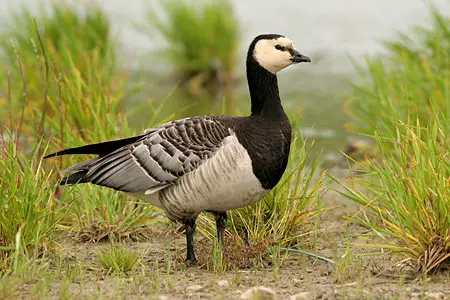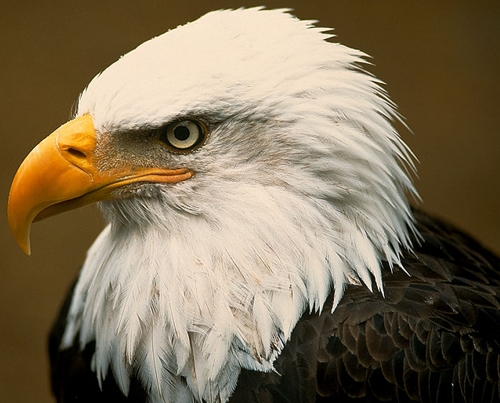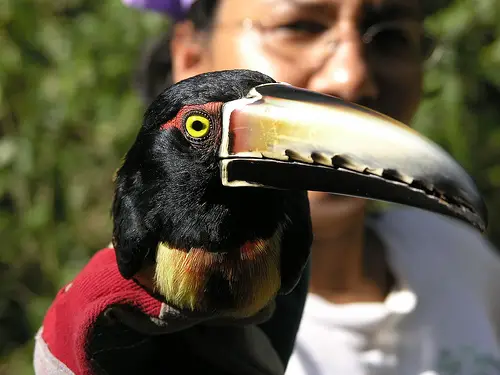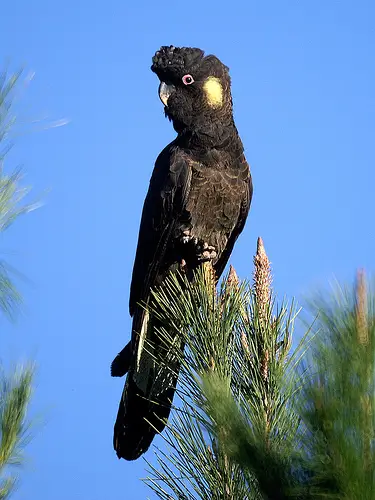Barnacle Goose
Barnacle Geese are one of the toughest birds, nesting beyond the Polar circle, and spending the winter in medium tempered areas. There’s an interesting theory about where the species’ name comes from – in the medieval times, the sudden appearance of these geese in winter made foundations to the myth that they are the next development form for a species of crustaceans – Barnacles.
The plumage of the Barnacle Goose holds a resemblance to that of a nun. Both sexes have their neck and chest black, while the stomach and the sides are white. The back is gray, with some white lines, while the head is completely white, except for a black spot on the back of the head and a dark patch stretching from the beak to the eyes. The Barnacle Goose is medium-sized, reaching 58-80 cm in length, and weighing 1,5-2 kg.
These interesting birds nest in the very northern parts of the globe, beyond the polar circle, while spending the winter in Ireland, Great Britain, Germany, and the Netherlands. Barnacle Geese live in large, noisy colonies, and the voice of these birds is heard from afar. In winter, they arrive to northern Europe, informing about their presence with loud quacks and bark-like calls.
Barnacle Gees most often feed on grass, as well as sprouts they find near sea shores. In the winter, when there is no grass, the birds supplement their diet with sea weeds, water bugs, snails and crustaceans. The large bird colonies usually try to find a large grassy area which is often flooded by water, resulting in a thick growth. If these conditions aren’t met, the geese look for a simple meadow further away from the shore.
The nesting period starts immediately upon returning from their wintering places – usually in May or June. During the rut, both the partners circle around each other, flap their wings and emit loud calls. After a pair has been formed, they most often stick together for the rest of their lives. Nests are often built on cliff hangs, river shores or other inaccessible places. It’s interesting that the Barnacle Goose often nests near larger, more aggressive birds, hoping that it will protect the eggs from polar foxes. Four to ten eggs are laid in the nest, and the female incubates them, while the male guards the nest. The chicks hatch four weeks later and immediately leave the nest, but the parents still take care of them for 40-45 days.
Interesting is the fact that these birds prefer such harsh weathers and spend winter in relatively cold areas. More interesting is the fact that their whereabouts where unknown for such a long time, and people thought that Barnacle Geese being a form of sea animals was more likely than them coming from the arctic tundra. In fact, in Ireland the meat of Barnacle Geese could be eaten during the lent, because people considered the animal to be more closely related to fish than birds.




